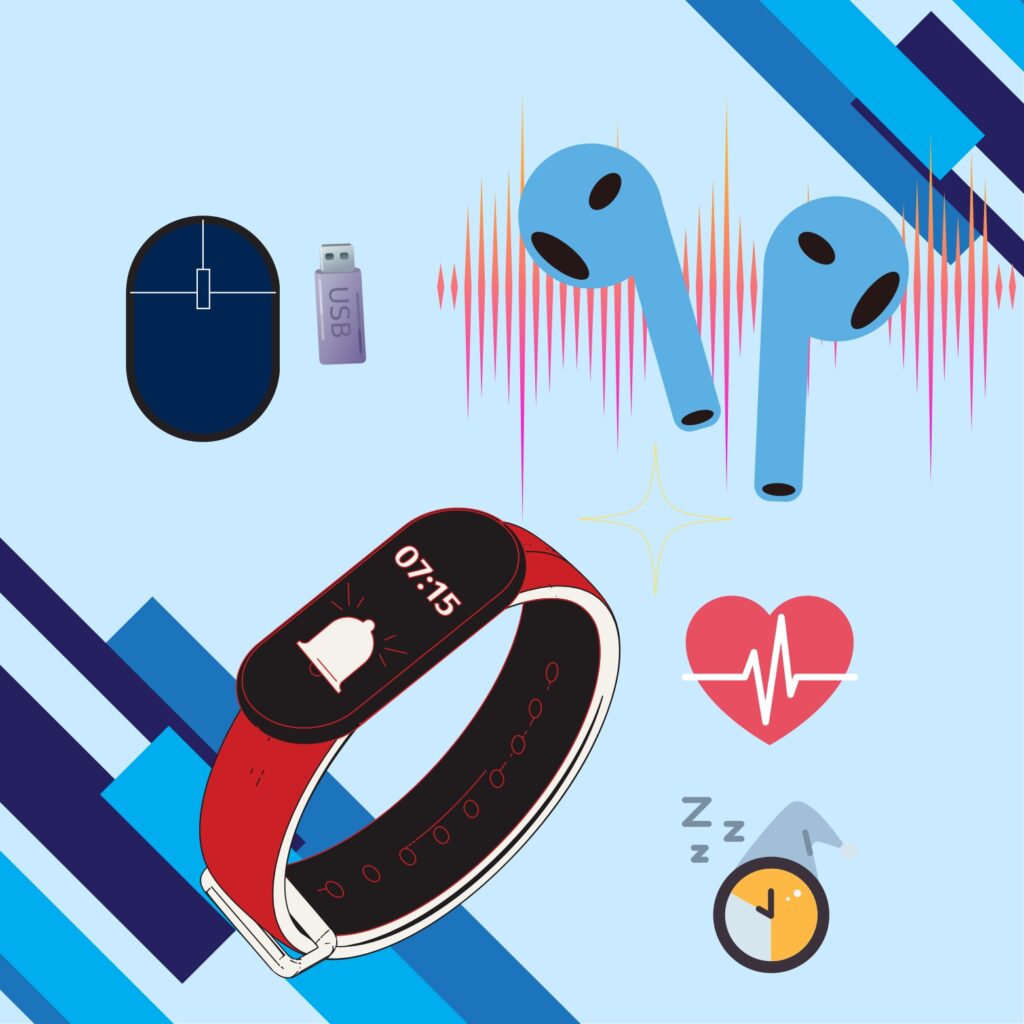Once seen as a novelty, wearable computing devices have quickly become essential daily tools. These gadgets have transitioned from luxury to necessity, from smartwatches tracking our health and fitness to augmented reality glasses providing hands-free access to information. This article will explore the evolution of wearable technology, analyzing how capabilities that were once viewed as flashy extras have become integral features we now rely on. You will gain insight into critical innovations that catalyzed this change and predictions for the future role of wearables. By understanding the trajectory that has led these devices from frivolous to fundamental, you will appreciate how profoundly wearable computing shapes modern life.
The Early Days of Wearable Computing: Fun Gadgets and Luxury Items
In the late 20th century, wearable computing devices were novel gadgets primarily targeting affluent consumers. They offered basic functionality and were seen more as a status symbol due to their high cost and limited availability.
1. Basic Fitness Trackers and Smartwatches
Some of the first wearable devices were basic fitness trackers and smartwatches that provided information like step counting, calorie tracking, and notifications. Products like the Fitbit Tracker and Apple Watch were initially priced at several hundred pounds, limiting adoption to those with disposable income.
2. Google Glass: An Ambitious Failure
Google Glass was an ambitious augmented reality headset that failed due to various factors. It had a £1,000 price tag, raised privacy concerns, and lacked a clear use case. While an impressive technical achievement, Google Glass proved that innovative wearable technology alone was insufficient to drive mainstream adoption.
3. Virtual Reality Headsets: An Immersive Escape
Virtual reality headsets like the Oculus Rift provide an immersive entertainment experience for gaming and 360-degree video. However, the high cost of the headsets and accompanying PCs meant virtual reality remained inaccessible for most.
Wearable computing started as a niche market for early adopters willing to pay a premium. Although the initial devices were imperfect, they demonstrated the technology’s potential and spurred rapid innovation. With time, costs have declined, and capabilities have expanded, allowing modern wearables to deliver meaningful benefits at an affordable price point for a wide audience.
The Rise of Smartwatches and Fitness Trackers

The advent of smartwatches and fitness trackers has transformed wearable technology from a novelty into a necessity for many. These devices offer a range of benefits, including health monitoring, communication, and connectivity.
Health and Fitness Monitoring
Smartwatches and fitness trackers contain sensors that track metrics such as steps taken, calories burned, heart rate, and sleep quality. This data provides insights into your health and fitness, allowing you to make better lifestyle choices and set goals to improve your well-being over time. Many devices also offer guided workouts and reminders to keep you active and consistent with your exercise routine.
Enhanced Communication
Smartwatches provide a convenient way to view and respond to notifications from your smartphone without retrieving it from your pocket or bag. You can read text messages, see who is calling you, and sometimes respond directly from your smartwatch. Some smartwatches also allow you to make and receive calls right from your wrist using a built-in microphone and speaker. This hands-free communication can be helpful when driving or accessing your phone is difficult.
Connectivity
Most smartwatches and some fitness trackers provide connectivity to your mobile device via Bluetooth, allowing notifications and data to sync between the two devices. Some smartwatches offer standalone mobile data or Wi-Fi connectivity, enabling essential functions like calls, texts, and app usage when your phone isn’t present. A few high-end smartwatches even have their own mobile number and data plan. This connectivity and quasi-independence from smartphones will only increase in the coming years.
In summary, wearable computing devices have transitioned from extravagance to necessity by offering health, communication, and connectivity benefits that many now rely on daily. Smartwatches and fitness trackers look set to become even more capable and indispensable.
Wearable Tech for Health Monitoring and Disease Prevention
1. Continuous Health Monitoring
- Wearable techs like fitness trackers and smartwatches allow continuous health monitoring and data collection. They can track metrics such as heart rate, blood pressure, sleep quality, and activity levels. This data provides insights into overall health and wellness. Doctors can analyze the data to detect early signs of chronic diseases like heart disease or diabetes. Patients at high risk of health issues can be closely monitored, and treatment plans can be adjusted based on the data.
2. Early Detection of Health Issues
- Wearable sensors can detect subtle changes in a person’s vital signs and health metrics that could indicate the early onset of a disease or health episode. For example, a smartwatch may detect an abnormal heart rhythm or a spike in blood pressure. This could prompt the user to consult their doctor for diagnosis and treatment. Early detection of health issues enabled by wearable tech can help prevent complications and improve outcomes.
3. Encouraging Healthy Lifestyles
- Wearable devices can motivate people to adopt healthier lifestyles by tracking metrics like daily activity levels, sleep quality, and calorie consumption. Many wearables offer challenges, rewards, and virtual coaching to help users set and achieve wellness goals. Studies show that people who use fitness trackers and smartwatches tend to exercise more, lose weight, and make better diet and lifestyle choices. Promoting healthy habits and behavior change is crucial to disease prevention and improving public health.
- While still an emerging field, wearable computing and health monitoring technologies show promise for transforming healthcare. Continuous access to personal health data and subtle indicators of changes in well-being allow for a proactive and personalized approach to healthcare. Wearable tech is poised to move from novelty gadgets to necessities that help people live longer, healthier lives.
Wearables for Seamless Communication and Connectivity
Always On and Always Connected
Wearable technology, such as smartwatches and fitness trackers, offer constant connectivity to help users stay up to date with important communications and information. These devices provide notifications for calls, messages, emails, and calendar events that can be viewed discreetly on the user’s wrist. This allows individuals to stay connected to colleagues and clients without checking their mobile phones repeatedly. Some wearables even offer the ability to accept or reject phone calls directly from the device.
Enhanced Productivity
Many wearables seamlessly integrate with smartphones and mobile apps, enhancing productivity. Calendar events, to-do lists, notes, and more can be viewed and managed on certain wearable displays. This provides a convenient way to quickly check schedules, set reminders, or mark tasks as complete without needing to take out a mobile phone. Some wearables also offer additional features like mobile payments or public transit navigation to further increase convenience and productivity on the go.
Health and Fitness Tracking
Many popular wearables provide fitness and health tracking capabilities using built-in sensors. Fitness trackers and smartwatches can monitor the steps taken, distance traveled, calories burned, and sleep quality. Some devices offer more advanced features like heart rate monitoring, GPS for pace and distance tracking, and compatibility with third-party health and fitness apps. The data collected from these wearables provides users with valuable insights into their daily activity levels and overall wellness, which can motivate them to make positive lifestyle changes.
The latest generation of wearable technology has transformed these devices from simple novelty gadgets into essential tools that can enhance communication, increase productivity, and support health and wellness. With constant connectivity, seamless integration with mobile technology, and fitness-tracking capabilities, wearables offer a multitude of benefits for both personal and professional use. These powerful yet discreet devices demonstrate how technology is evolving to provide relevant information and capabilities when and where users need them most.
The Future of Wearables: Seamless Integration Into Daily Life
In the coming years, wearable computing devices will transition from novelty gadgets to essential tools that seamlessly integrate into users’ daily lives. As technology advances, wearables will become increasingly sophisticated, intuitive, and indispensable.
Enhanced Health Monitoring
- Wearable health trackers and medical devices currently on the market offer a glimpse into the future of preventative healthcare. Continuous biometric tracking will provide deeper insights into individuals’ health and fitness. Doctors will have access to comprehensive health data to enable early detection of potential medical issues, allowing for prompt diagnosis and treatment. Patients will gain a greater awareness and understanding of their health and the impacts of lifestyle choices.
Intuitive and Unobtrusive
- The wearables of the future will feature seamless integration of hardware and software. They will leverage artificial intelligence and machine learning to anticipate users’ needs and streamline interactions. Sophisticated biosensors and flexible electronics will enable highly customizable yet unobtrusive devices. The most advanced wearables may incorporate technology like electronic skin, smart tattoos, or ingestible sensors that provide monitoring and insight without requiring external hardware.
Hyper-Connected Communication
- Wearables will transform how we connect and communicate with one another. Next-generation smart watches, AR/VR headsets, and other devices will provide intuitive interfaces for messaging, social media, and calls. Real-time language translation will remove communication barriers for travelers and multilingual workplaces. The widespread adoption of wearables, combined with 5G and the growth of smart cities, will accelerate the development of highly connected communities.
- While still an emerging field, wearable computing shows significant promise. Continued progress will drive wearables to become integral tools that improve health outcomes, enhance productivity and connectivity, and ultimately transform lives. The future is one of possibility, and wearable technology aims to help enable it.
Summing It Up
As wearable computing devices have evolved, they have transitioned from novelty gadgets to indispensable tools offering a wide range of capabilities. From fitness tracking to mobile connectivity, wearables now provide capabilities that many have come to rely on daily. Looking ahead, innovations in form factor, battery life, and functionality will likely accelerate, bringing even more advanced and specialized wearables to consumers in the coming years. Embracing these devices thoughtfully and using them to enhance your health, productivity, and well-being rather than becoming dependent on technology will allow you to maximize the benefits of this emerging field. With an open, balanced mindset, wearable computing can enrich your life immensely.
More Stories
Gamuda Powers Malaysia’s Digital Leap with Google’s Data Center Deal
Google has awarded Gamuda Berhad a significant contract to develop a hyperscale data center in Malaysia. This collaboration highlights Google’s investment strategy to strengthen cloud infrastructure and AI capabilities in Southeast Asia.
Agent Hospital: China’s AI Doctors Redefine Global Healthcare Frontiers
China’s “Agent Hospital” emerges as a revolutionary force in healthcare. Developed by Tsinghua University, this groundbreaking facility boasts the world’s first fleet of fully AI-driven medical professionals.
Spotify Unveils ‘Plays’ Count, Turning Podcasts into a Popularity Contest
Spotify has taken a bold step by unveiling a new “plays” count feature for podcasts, a move that promises to redefine the dynamics of content popularity. This innovation introduces a level of transparency akin to the metrics seen on video platforms, turning podcasting into a competitive arena where every play counts.
AI Max: Google’s Next Leap in Predictive Search Advertising
AI Max revolutionizes the way advertisers connect with users by harnessing sophisticated algorithms to predict search intent with unprecedented accuracy.
Microsoft’s AI-Cloud Synergy: Fueling Unprecedented Growth Under Nadella’s Vision
Microsoft AI and cloud computing alignment under CEO Satya Nadella fuels unprecedented growth, which highlights its commitment to innovation.
India’s Quantum Leap: IBM and TCS Launch Nation’s Largest Quantum Computer at Quantum Valley
IBM and Tata Consultancy Services (TCS) have partnered to install India’s largest quantum computer. This advanced system will be located at the upcoming Quantum Valley Tech Park in Andhra Pradesh.


